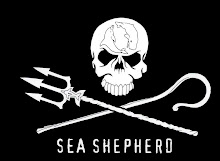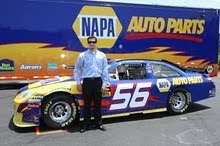
Sunday June 27, 2010 was Amateur Radio’s most sacred day of the year, better know as Field Day. On Field Day, thousands of Hams gather in parks, campgrounds, back yards and even in the comfort of their shacks to set up and operate ham radio equipment. They are encouraged to use alternate power sources and other out of the ordinary ways to operate. This is done for practice in case of natural disaster or severe weather situations.
Since getting my General class ticket only a year ago this was the first time that I decided to participate in Field Day. I got up bright and early, turned on my rig and couldn’t find a clear frequency to save my life. I never heard so many stations at one time before. The question was however, what was I hearing?
After stations gave their "call" they would also send a number and a series of letters, what did they mean? I would here "W2ABB 2B NNJ". OK, I of course knew what the W2ABB was but 2B NNJ? So I did what I always do when I feel dumb, I Googled "Field Day".
After about an hour it was "no joy". I found everything about Field Day except what information was being exchanged. Finally after what seemed like a 100 different sites it started to make sense. This is what I discovered.
The "the number designates the number of transmitters used, for instance if your club was operating three transmitters the number would be 3. The first letter was the your class, for instance if you where mobile you would be class C. The second sets of letter is you’re A.R.R.L. section, NNJ meaning Northern New Jersey. I also heard some stations just say "Northern New Jersey" instead of "NNJ".
I hope this help all of you first time Field Day participants next year. Look below for a simple listing of class and sections.
Classes:
Class A Battery: Club or non club with 3 or more operators using 5 watts or less and a power source other then commercial power.
Class B: One or two person’s portable.
Class C: Mobile.
Class D: Home Stations using commercial power.
Class E: Home Stations using emergency power.
Class F: Emergency Operators Centers (EOC).
ARRL/RAC Contest Section Abbreviation List.
1.
Connecticut – CT / Rhode Island – RI
Eastern Mass. - EMA / Vermont – VT
Maine – ME / Western Mass. – WMA
New Hampshire – NH
2.
Eastern NY – ENY / Northern NY – NNY
NYC/Long Island – NLI / Southern NJ – SNJ
Northern NJ – NNJ / Western NY – WNY
3.
Delaware – DE / Maryland/DC – MDC
Eastern PA – EPA / Western PA – WPA
4.
Alabama – AL / Southern FLA – SFL
Georgia – GA / Tennessee – TN
Kentucky – KY / Virginia – VA
North Carolina – NC / West Central FLA – WCF
Northern FLA – NFL / Puerto Rico – PR
South Carolina – SC / Virgin Islands – VI
5.
Arkansas – AR / North Texas – NTX
Louisiana – LA / Oklahoma – OK
Mississippi – MS / South Texas - STX
New Mexico – NM / West Texas – WTX
6.
East Bay – EB / San Diego – SDG
Los Angeles – LAX / San Francisco – SF
Orange – ORG / San Joaquin Valley – SJV
Santa Barbara – SB / Sacramento Valley – SV
Santa Clara Val. – SCV / Pacific – PAC
7.
Alaska – AK / Nevada – NV
Arizona – AZ / Oregon – OR
Eastern WA. – EWA / Utah – UT
Idaho – ID / Western WA. – WWA
Montana – MT / Wyoming – WY
8.
Michigan – MI / West Virginia – WV
Ohio – OH
9.
Illinois – IL / Wisconsin – WI
Indiana – IN
0.
Colorado – CO / Missouri – MO
Iowa – IA / Nebraska – NE
Kansas – KS / North Dakota – ND
Minnesota – MN / South Dakota – SD
Canada.
Maritime – MAR / Saskatchewan – SK
New Foundland/Labrador – NL / Alberta – AB
Quebec – QC / British Columbia – BC
Ontario – ON / Northern Territories – NT
Manitoba – MB
Understanding Field Day!
Subscribe to:
Post Comments (Atom)











0 comments:
Post a Comment